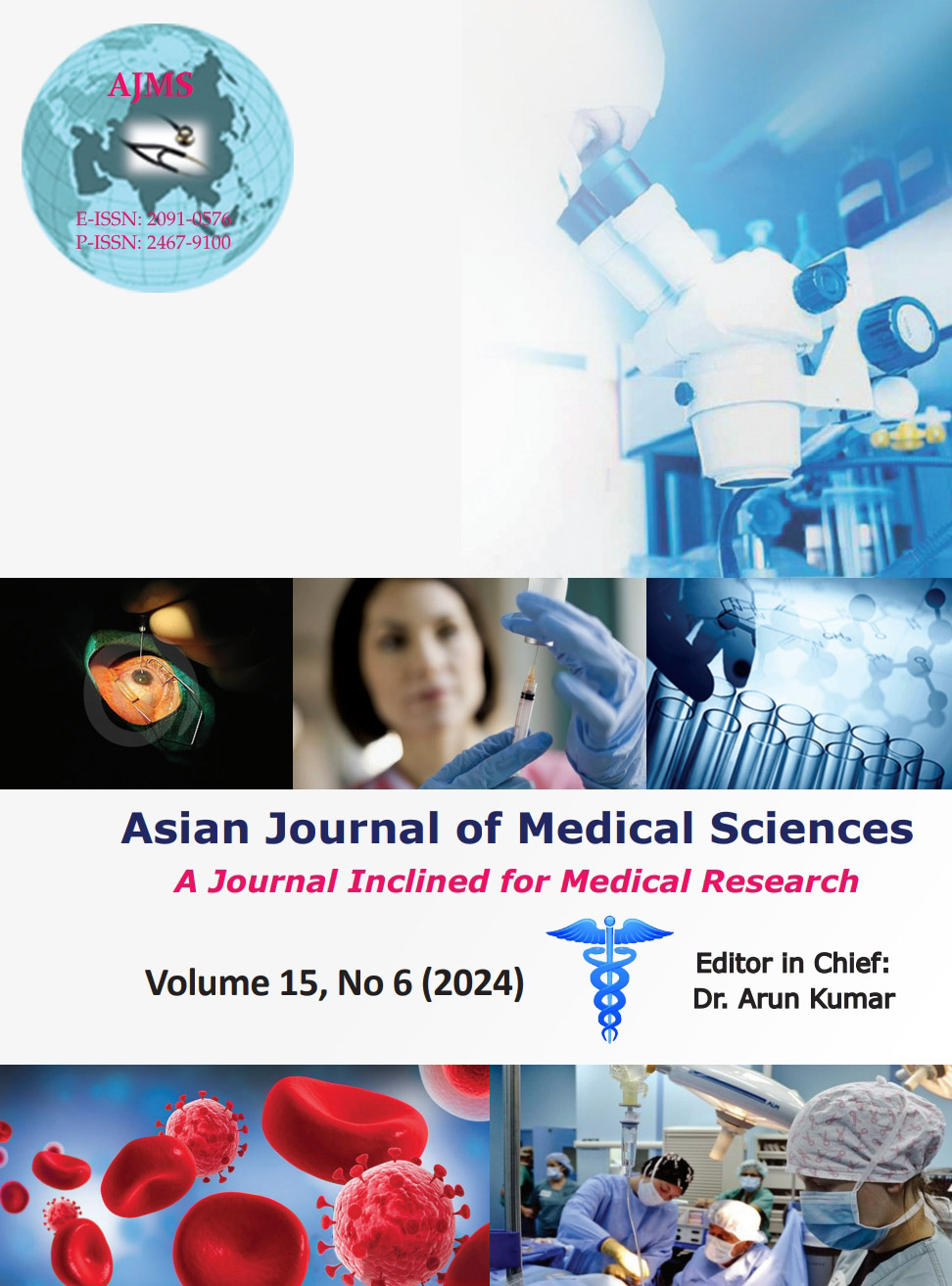Cytohistopathological evaluation of salivary gland lesions in tertiary care center of Eastern Nepal
Keywords:
Fine needle aspiration cytology; Neoplastic; Non-neoplastic; Salivary glandAbstract
Background: Salivary gland tumors consist of a group of heterogeneous lesion with complex clinicopathological characteristics. Fine needle aspiration (FNA) cytology has been used as a quick, non-invasive diagnostic tool for the diagnosis of neoplastic and non-neoplastic lesion of salivary gland.
Aims and Objectives: The aims and objectives of the study are to perform the cytopathological evaluation of minor and major salivary gland lesions (neoplastic and non-neoplastic) in terms of its various types, frequency, site, demographic distribution and to correlate with histopathology findings whenever available.
Materials and Methods: This is a hospital-based 3-year study in which 155 cases of patient underwent FNA cytology for salivary gland swelling (non-neoplastic and neoplastic) of which seven cases were excluded due to scant and inadequate aspirate, and thus, only 148 cases were included in this study and histopathological correlation was available in 42 cases. Any metastatic lesion, repeat samples from same patient were excluded from the study.
Results: Out of 148 cases, male patients were 72 (49%) and female patients were 76 (51%) with M: F ratio of 0.9:1. Benign lesion was commonly seen in 31–40 years, non-neoplastic lesion at 41–60 years (n=18, 37.6%), and malignant lesions at 61–90 years (n=9, 37.5%). Parotid was the most common salivary gland involved by neoplastic and non-neoplastic lesion accounting 65.5% (n=97) followed by submandibular gland 29.7% (n=34). Pleomorphic adenoma was most frequently diagnosed among all salivary gland lesions (60%). Mucoepidermoid carcinoma outnumbered the category (14%) of malignant salivary gland lesion. On histopathology correlation, 33 cases were correctly diagnosed in cytopathology whereas 9 cases showed discordant result. FNA cytology sensitivity was 66.6%, specificity was 93.3%, positive predictive value was 80.0%, and negative predictive value was 87.5%, respectively. Diagnostic accuracy was found to be 85.7%.
Conclusion: Cytopathology examination of salivary gland can be used as safe and reliable method in primary diagnosis of lesions of salivary gland.
Downloads
Downloads
Published
How to Cite
Issue
Section
License
Copyright (c) 2024 Asian Journal of Medical Sciences

This work is licensed under a Creative Commons Attribution-NonCommercial 4.0 International License.
Authors who publish with this journal agree to the following terms:
- The journal holds copyright and publishes the work under a Creative Commons CC-BY-NC license that permits use, distribution and reprduction in any medium, provided the original work is properly cited and is not used for commercial purposes. The journal should be recognised as the original publisher of this work.
- Authors are able to enter into separate, additional contractual arrangements for the non-exclusive distribution of the journal's published version of the work (e.g., post it to an institutional repository or publish it in a book), with an acknowledgement of its initial publication in this journal.
- Authors are permitted and encouraged to post their work online (e.g., in institutional repositories or on their website) prior to and during the submission process, as it can lead to productive exchanges, as well as earlier and greater citation of published work (See The Effect of Open Access).




